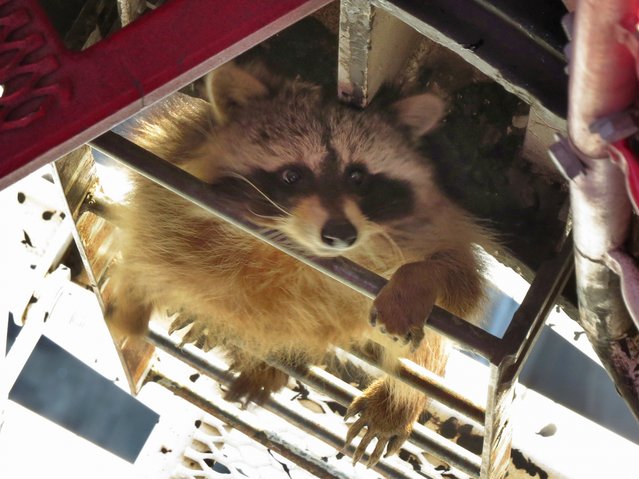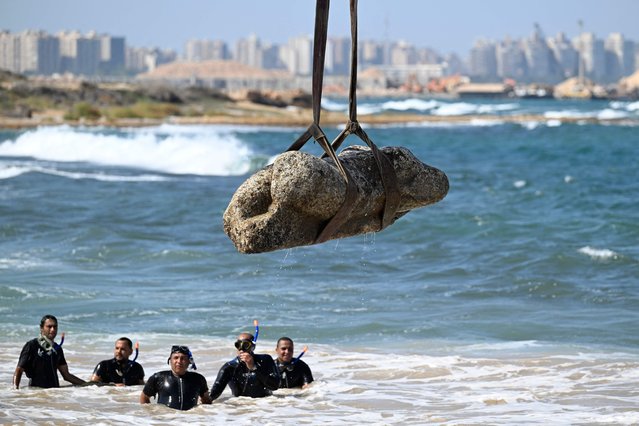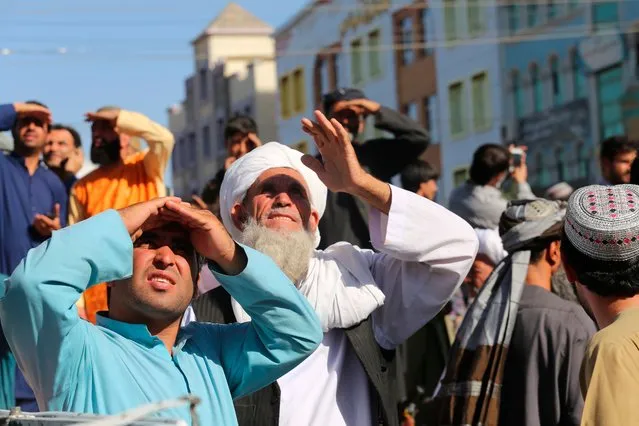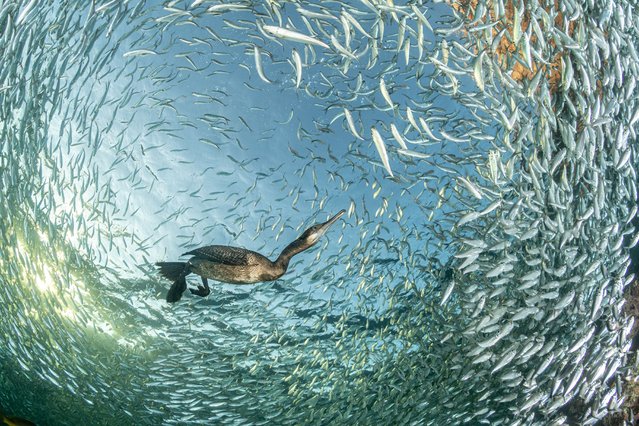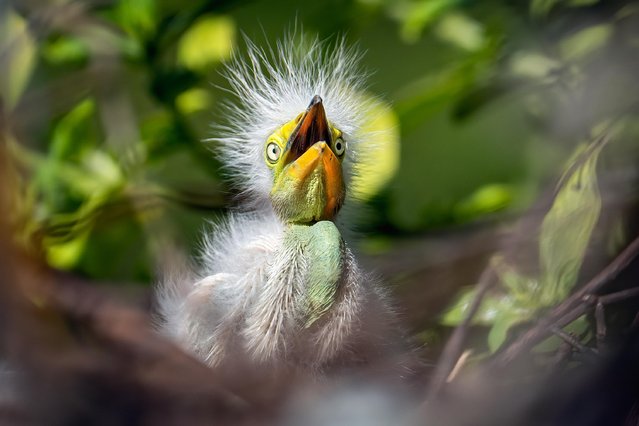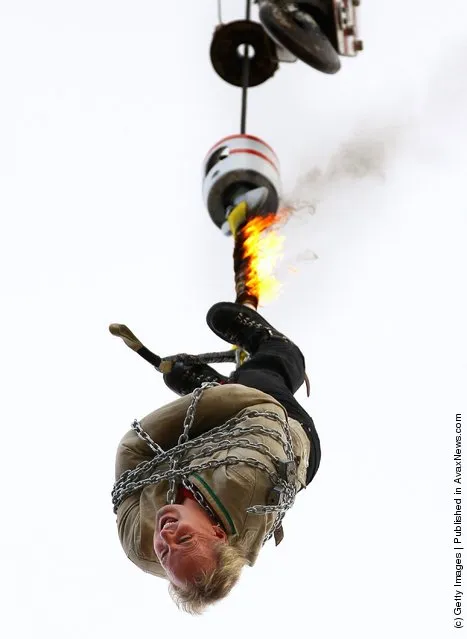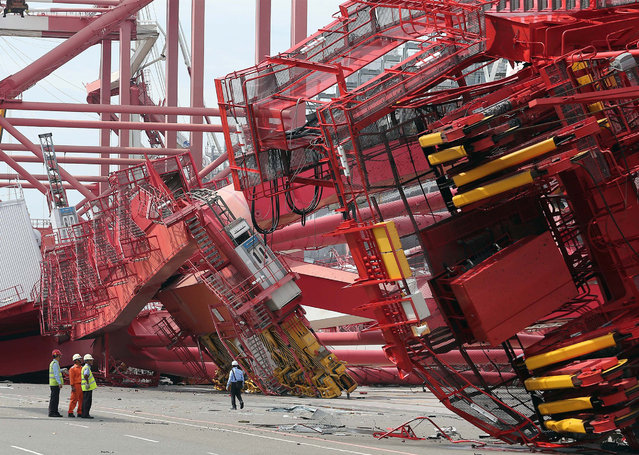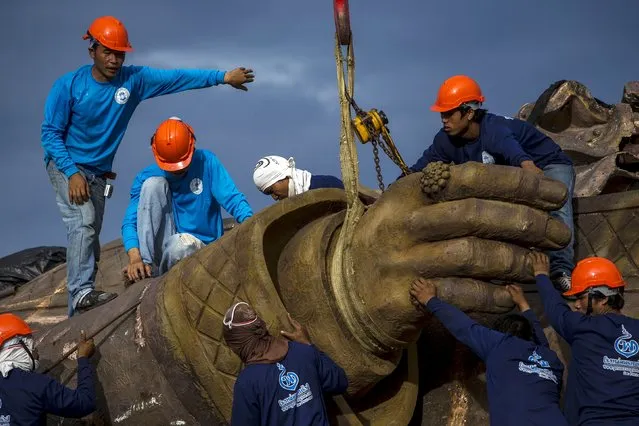
Labourers use a crane to lift the hand of a giant bronze statue of former King Rama I at Ratchapakdi Park in Hua Hin, Prachuap Khiri Khan province, Thailand, August 4, 2015. The park is being constructed by the Thai army to honor past Thai monarchs and is situated on an army compound near the Klai Kangwon Palace. The project is estimated to cost about 700 million baht ($20,000,000), according to local media. (Photo by Athit Perawongmetha/Reuters)
05 Aug 2015 14:05:00,post received
0 comments

